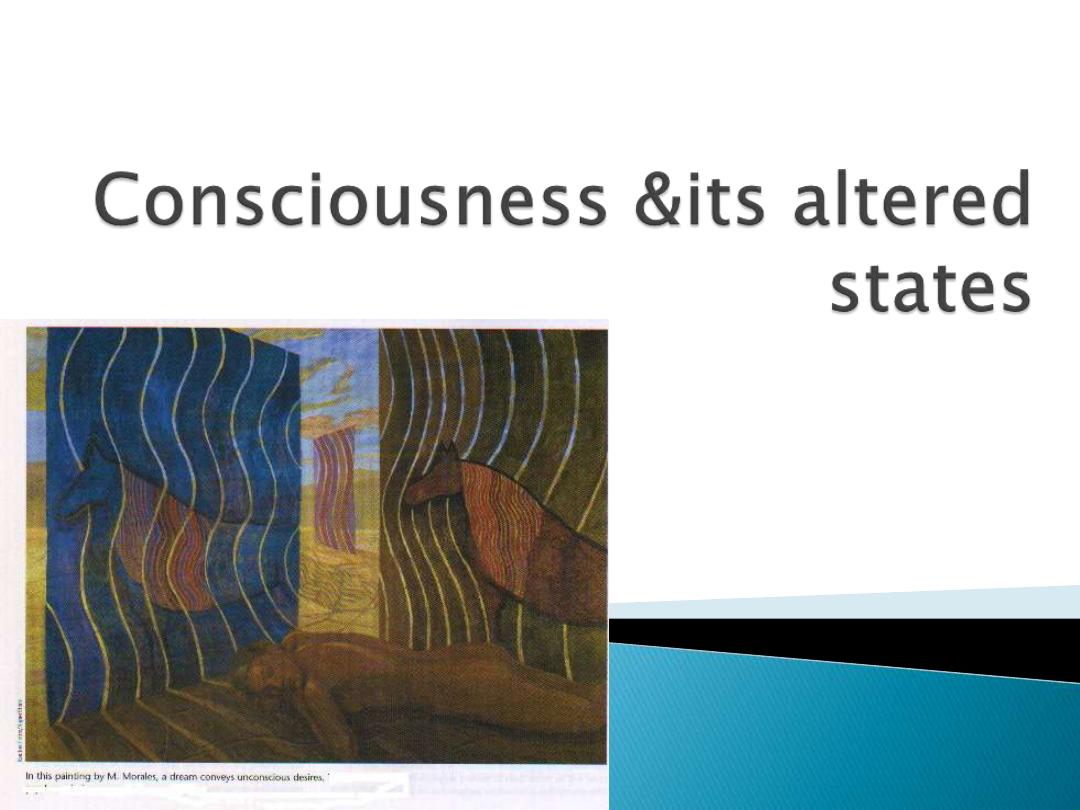
Dr Nesif Al- Hemiary
M.B.Ch.B -
F.I.C.M.S.(Psych.)
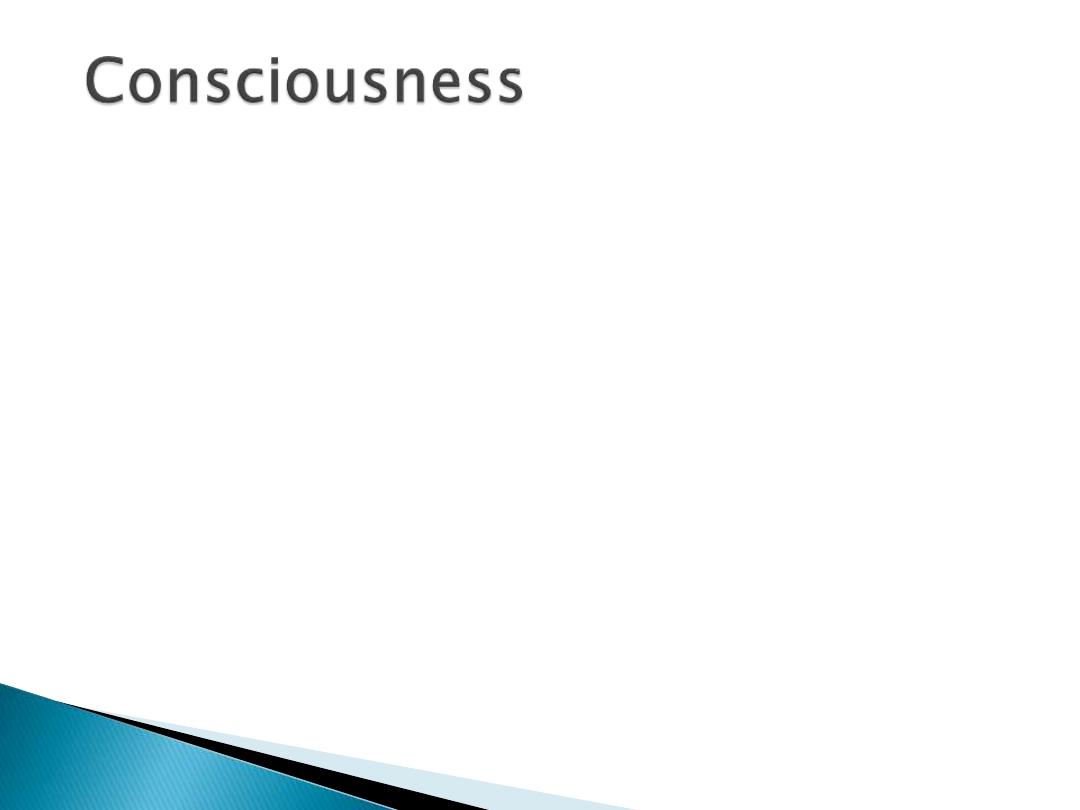
Definition
The individuals current awareness of external and
internal stimuli ( that is of events in the
environment and of body sensations, memories,
and thoughts).
We are also conscious when we try to solve a
problem or deliberately select one course of action
over others in response to environmental
circumstances and personal goals.
We are conscious not only when we monitor our
environment (internal and external) but also when
we seek to control ourselves and our environment.
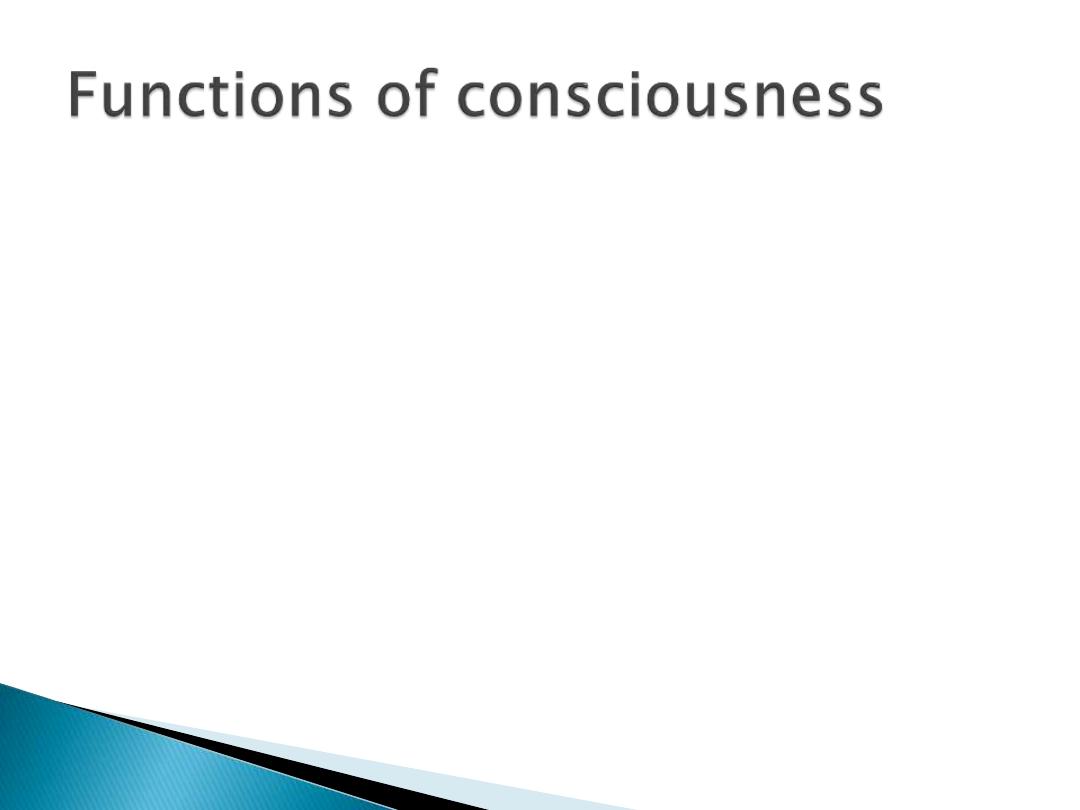
A- Monitoring
B-Controlling
MONITORING
Ourselves and our environment so that percepts,
memories, and thoughts are presented in awareness.
CONTROLLING
Ourselves and our environment so that we are able
to initiate and terminate behavioral and cognitive
activities.
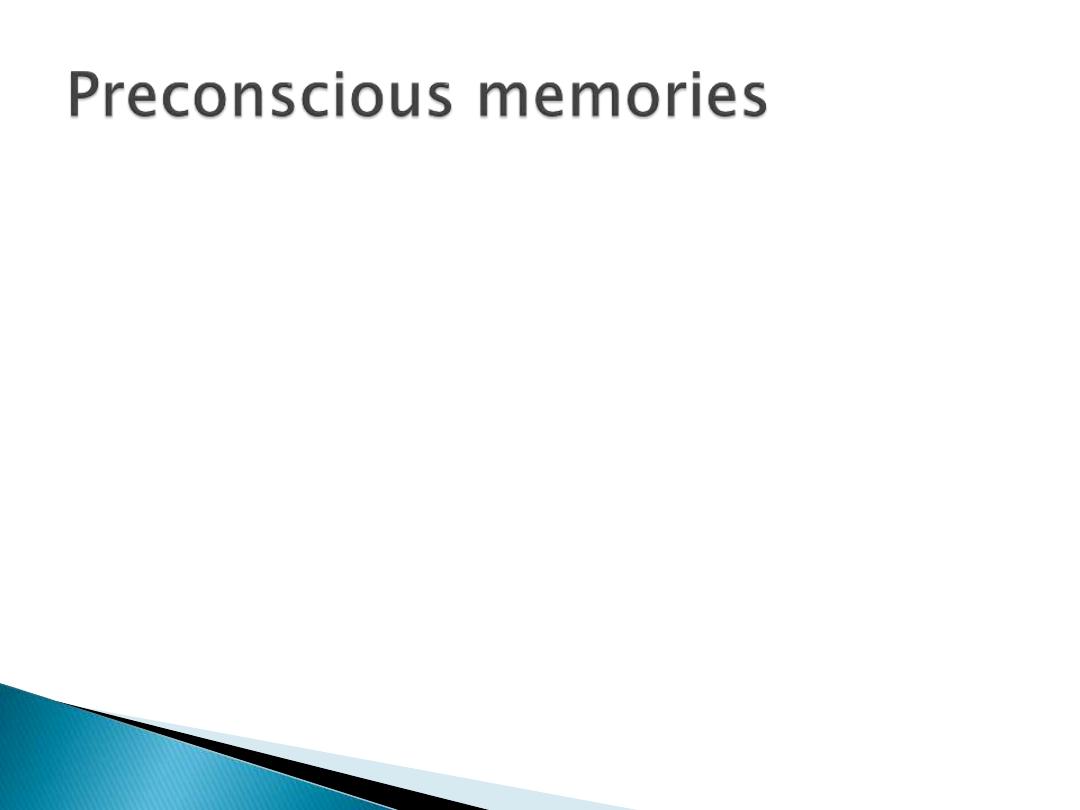
Many memories and thoughts are not part of
your consciousness at a certain moment of time
,but can be brought to consciousness when
needed.
THE MEMORY IS ACCESSIBLE.
Preconscious memories are used to refer to
memories that are accessible to consciousness
,like memories of personal events as well as
information accumulated over time. Also
include learned skills like procedures involved
in driving a car.
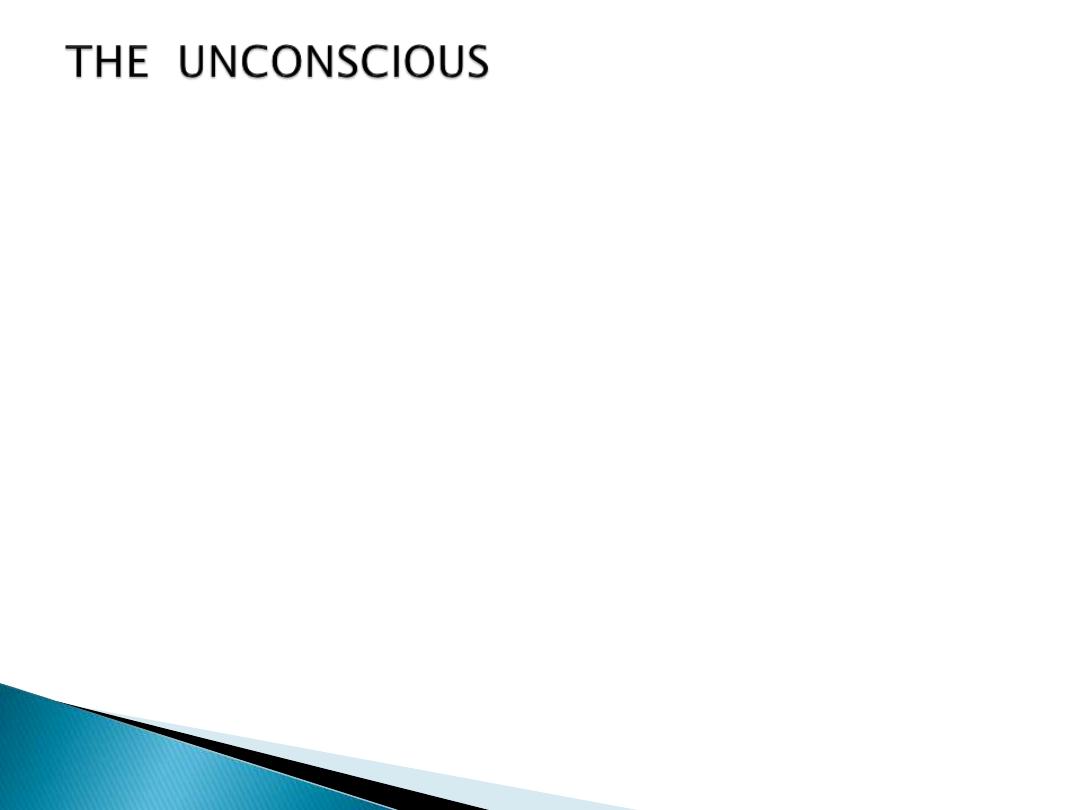
According
to the psychoanalytic theory :
some emotionally painful
memories and impulses are not available to consciousness because they
have been repressed ( that is diverted to the unconscious).
BUT, they continue to influence our behavior even though they reach
consciousness only in indirect ways through dreams, irrational behavior,
and slips of the tongue.
The Freudian term slips refer to unintentional remarks that are assumed to
reveal hidden impulses.
(Good morning beheaded – uhm l mean beloved.)
FREUD believed that unconscious desires and impulses are the cause of
most mental illnesses .He developed the method of psychoanalysis ,which
attempts to draw the repressed material back in to consciousness ,and in
so doing, cure the individual.
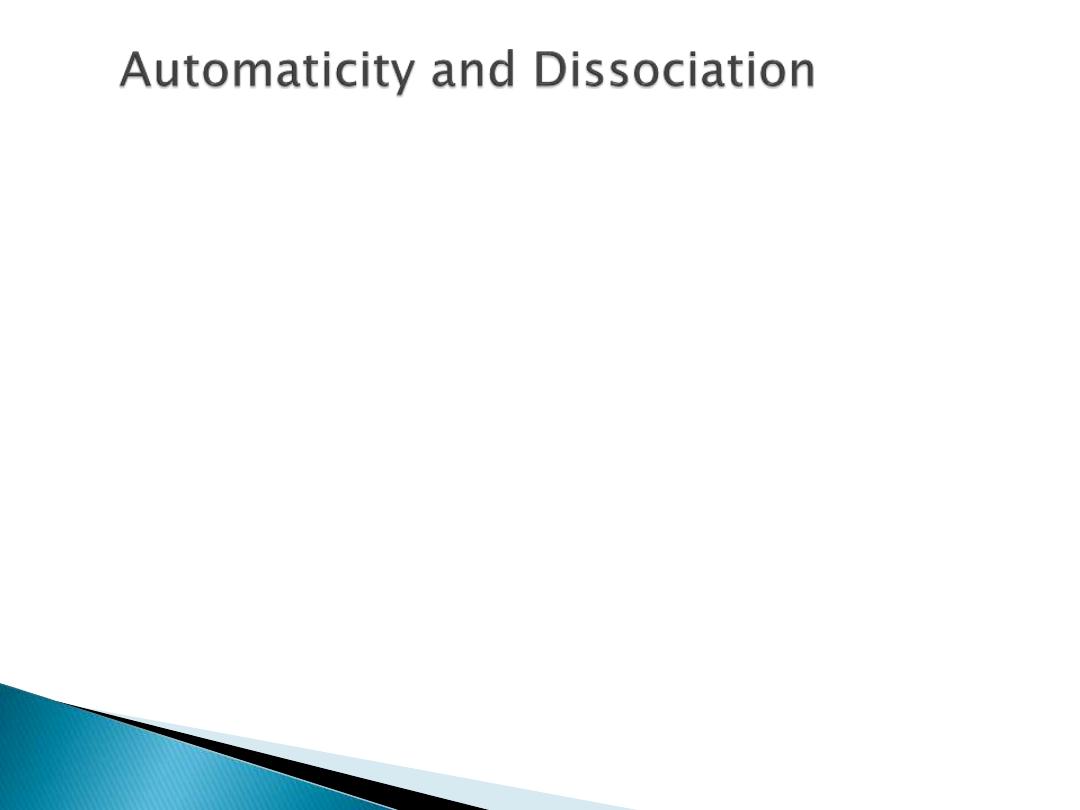
Automaticity:
Some activities are practiced so often that they
become habitual or automatic.
Dissociation:
Pierre Janet(1889)-French Psychiatrist
Under certain conditions some thoughts and actions
become slip off, or dissociated, from the rest of
consciousness and function outside of awareness.
Example: Day dreaming

We spend one fourth to one third of
our lives in sleep.
There are many stages of sleep in
which brain activity recorded by the
Electroencephalogram ( EEG )differ
from each other.
Types of sleep:
Non-rapid eye movement sleep (NREM)
-4 stages
Rapid eye movement sleep (REM).
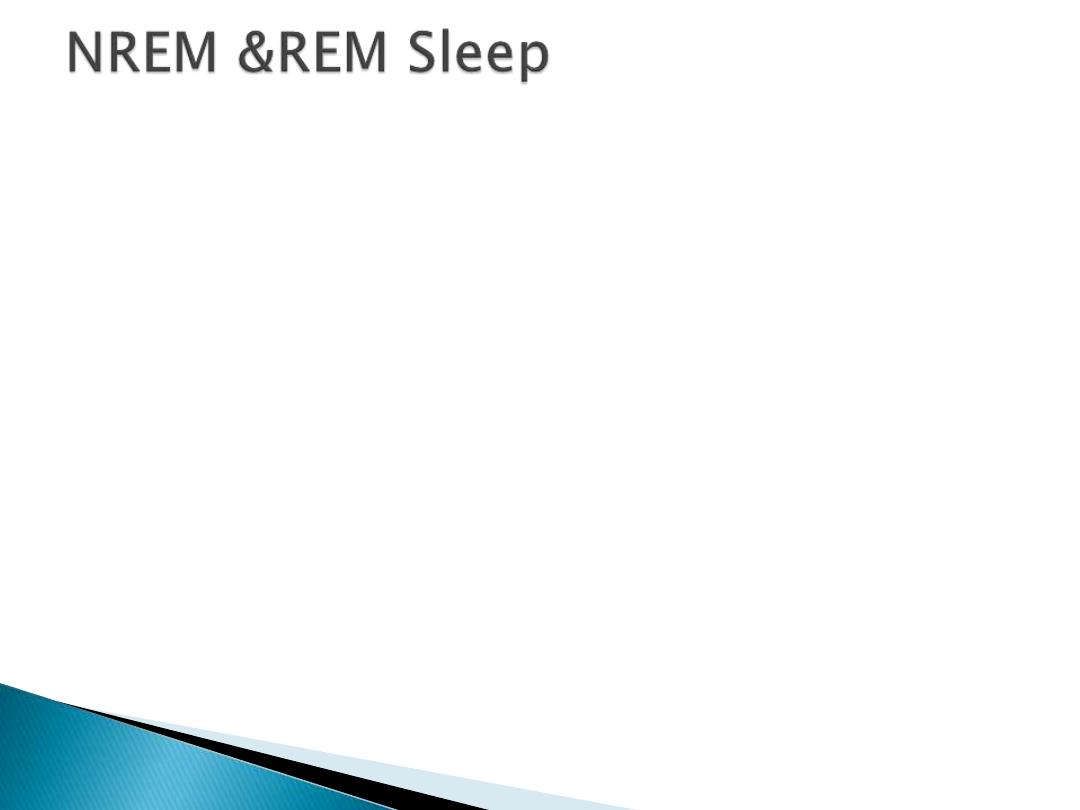
During NREM sleep:
1.
Eye movements are absent.
2.
Heart and breathing rates decrease markedly.
3.
There is increased muscle relaxation.
4.
There is diminished brain activity.
During REM sleep:
1.
Eye movements occur about 40-60 times
(they beat in bursts lasting 10-20 seconds).
2.
Heart rate increases to its day time level.
3.
The brain is more active than it is when we are
awake.
4.
We are completely paralyzed ( only the heart
,diaphragm, eye muscles and smooth muscles
are spared )

Sleepers awakened during REM sleep almost always
report having a dream, but when awakened during
NREM sleep they will report a dream only about
50% .
Dreams of REM sleep are visually vivid and have a
bizarre , illogical character, while in NREM sleep
dreams are more like normal thinking; neither as
visual, nor as emotionally charged as REM dreams
,and are more related to what is happening in
waking life.
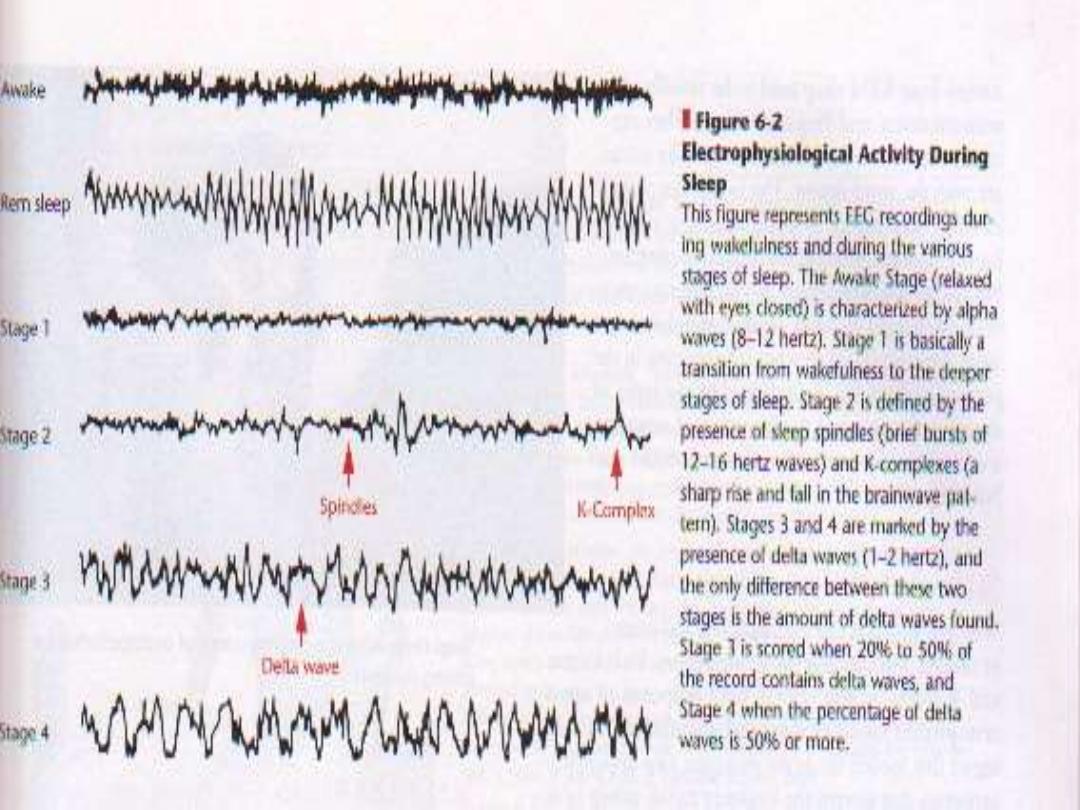
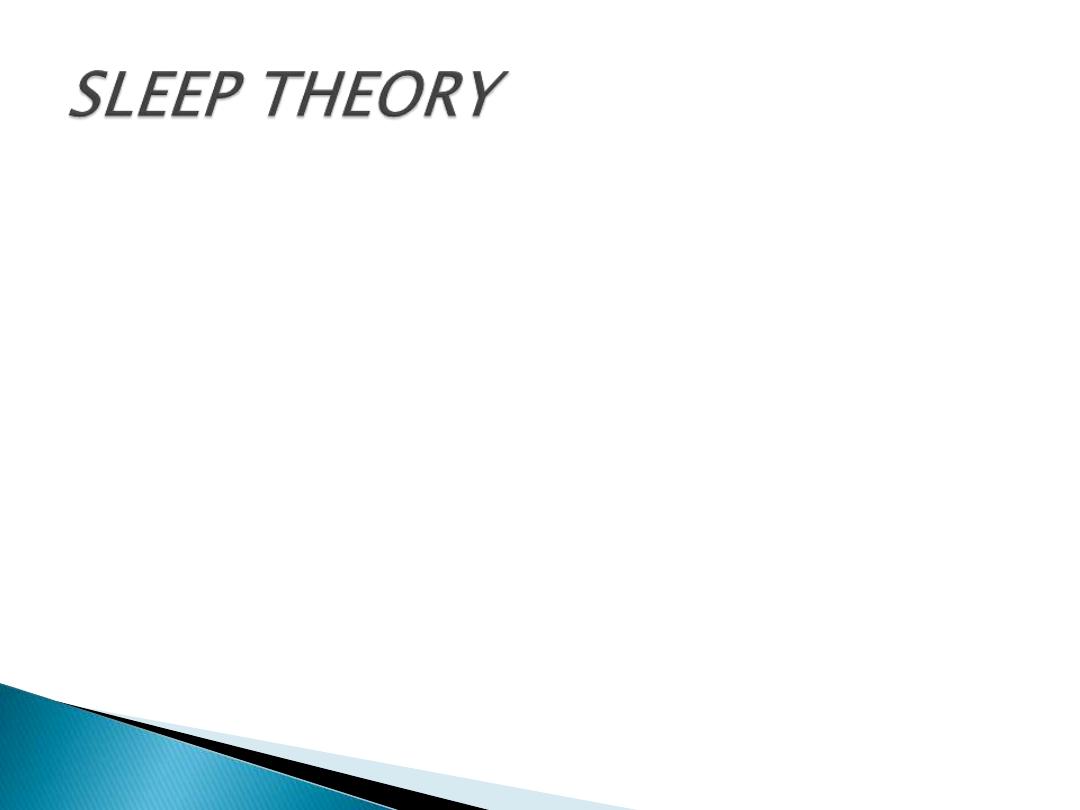
Why we are awake at certain times and
asleep at others
?
Opponent process model of sleep &
wakefulness.( Dale Edgar &William Dement
-1992 ):according to this model ,the brain
possesses two opponent processes that
govern the tendency to fall asleep or remain
awake. They are:
1. The homeostatic sleep drive.
2. The clock dependent alerting process
(biological clock)
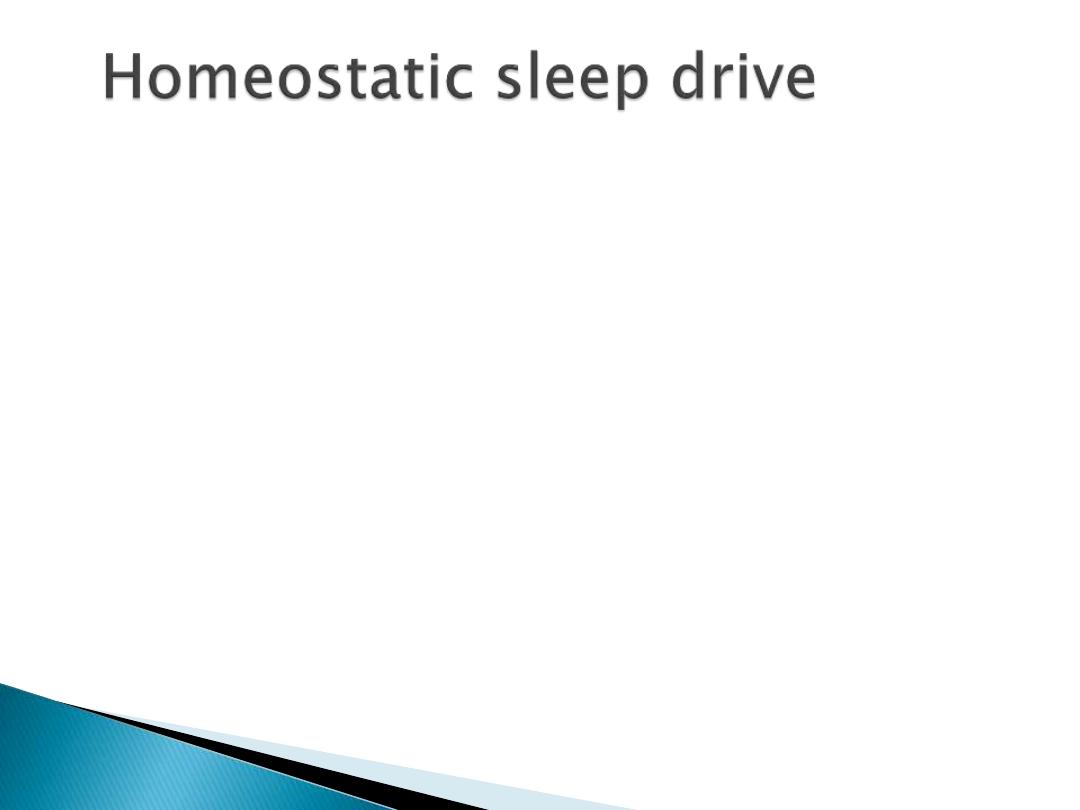
A physiological process that strives to
obtain the amount of sleep required for
a stable level of daytime alertness. It is
active throughout the night, but it also
operates during daytime.
Throughout the day, the need to sleep
is continuously building . If we have
slept too little the previous night , the
tendency to fall asleep during the day
will be significant
.
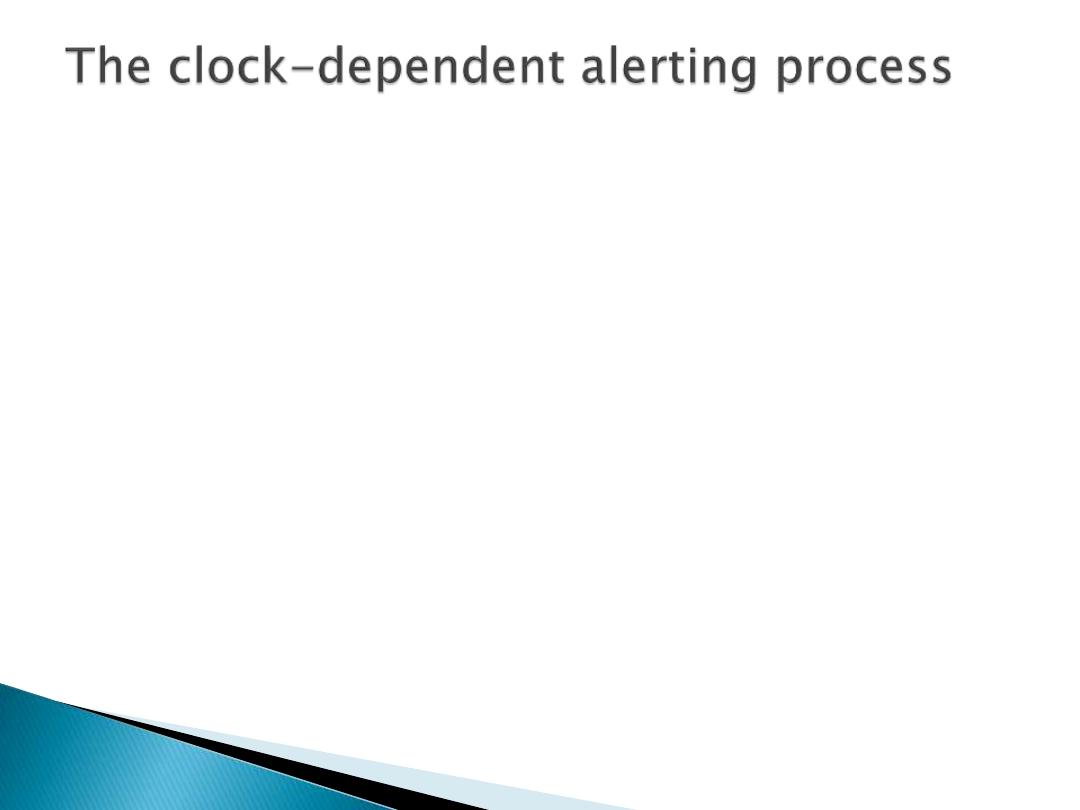
Is the process in the brain that arouses us at a
particular time each day.
Controlled by the biological clock.
The so-called biological clock consists of two tiny
neural structures located in the center of the
brain(pineal bodies).
It controls circadian rhythms.
Daylight signals it to stop the secretion of melatonin,
a hormone that induces sleep.
The two opponent processes – homeostatic sleep
drive and clock-dependent alerting process- interact
to produce our daily cycle of sleep and wakefulness.
Whether we are asleep or awake at any given time
depends on the relative strength of the two processes.
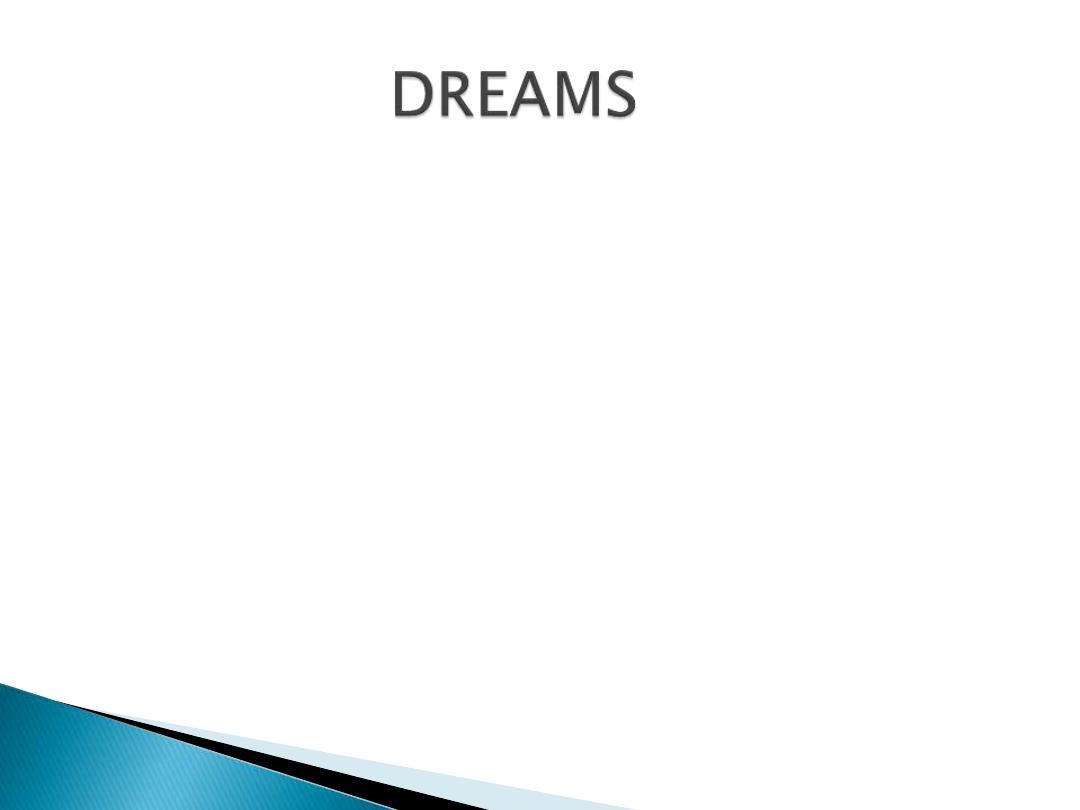
Dreaming is an altered state of
consciousness in which picture stories
are constructed based on memories
and current concerns, or on fantasies
and images.
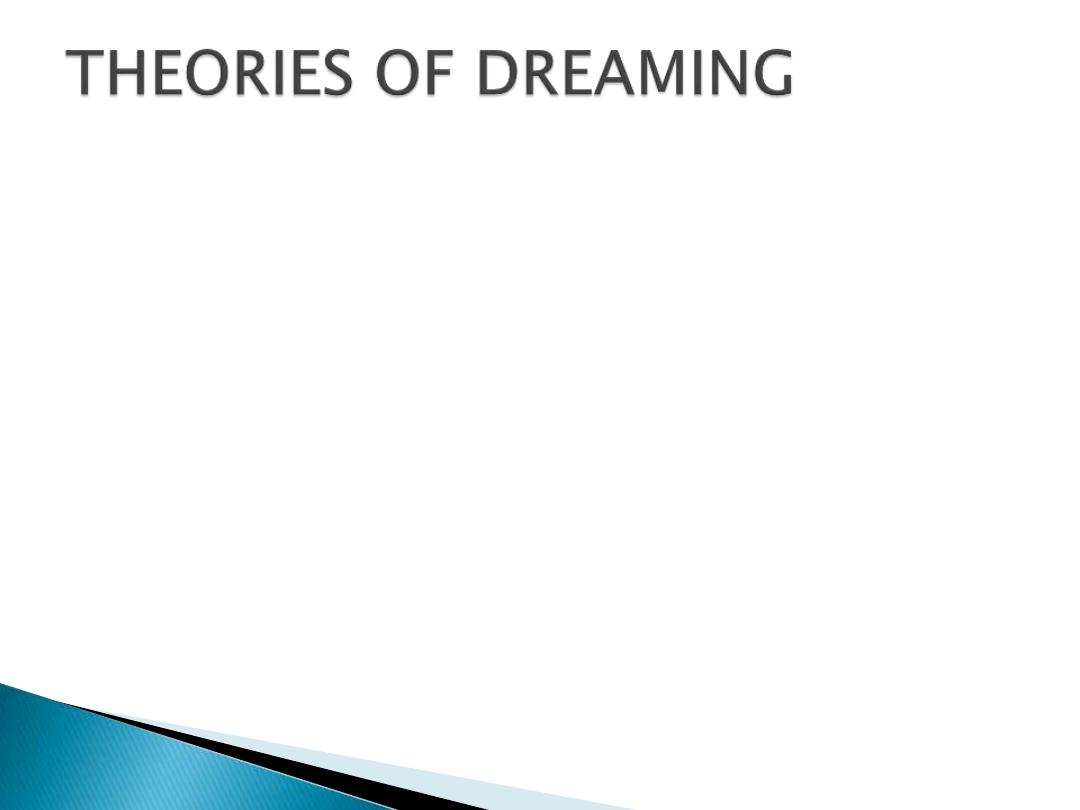
Freud –Interpretation of dreams (1900)
Dreams provide a royal road to a
knowledge of the unconscious activities
of the mind. He believed that dreams are
a disguised attempt at wish fulfillment.
By this he meant that the dream touches
on wishes ,needs ,or ideas that the
individual finds unacceptable and have
been repressed to the unconscious.
These wishes and ideas are the latent
content of the dream.
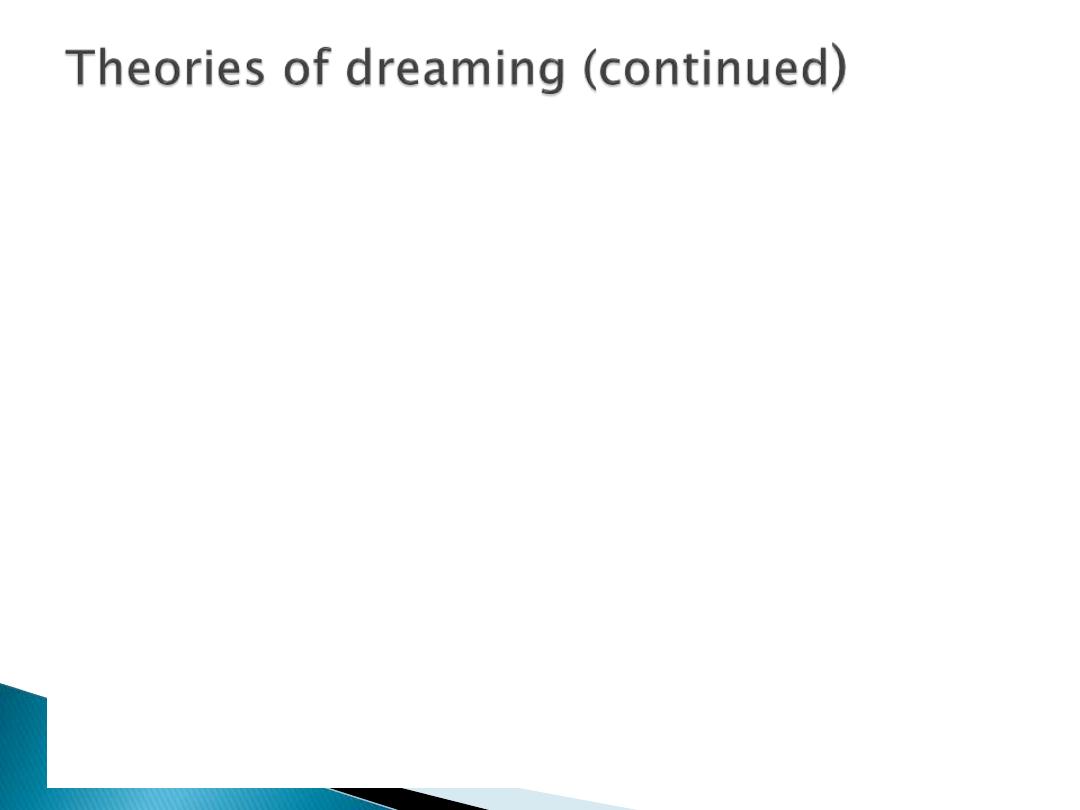
Fisher &Greenberg (1977):
There is good evidence that the content of dreams
has psychological meaning, but there is none that
supports Freud’s distinction between manifest and
latent content.
Evans (1984):
Sleep is a period when the brain disengages from
the external world and uses this off-line time to sift
through the information that was input during the
day and to incorporate it into memory.
Hobson(1997):
Dreams are similar to delirium.
Cartwright (1978,1992,1996):
Dreams have a problem-solving function.
Antrobus,1991;Domhoff,1996;Foulkes,1985:
Dreaming is a cognitive process that reflects the
individuals conceptions ,concerns, and emotional
preoccupations.
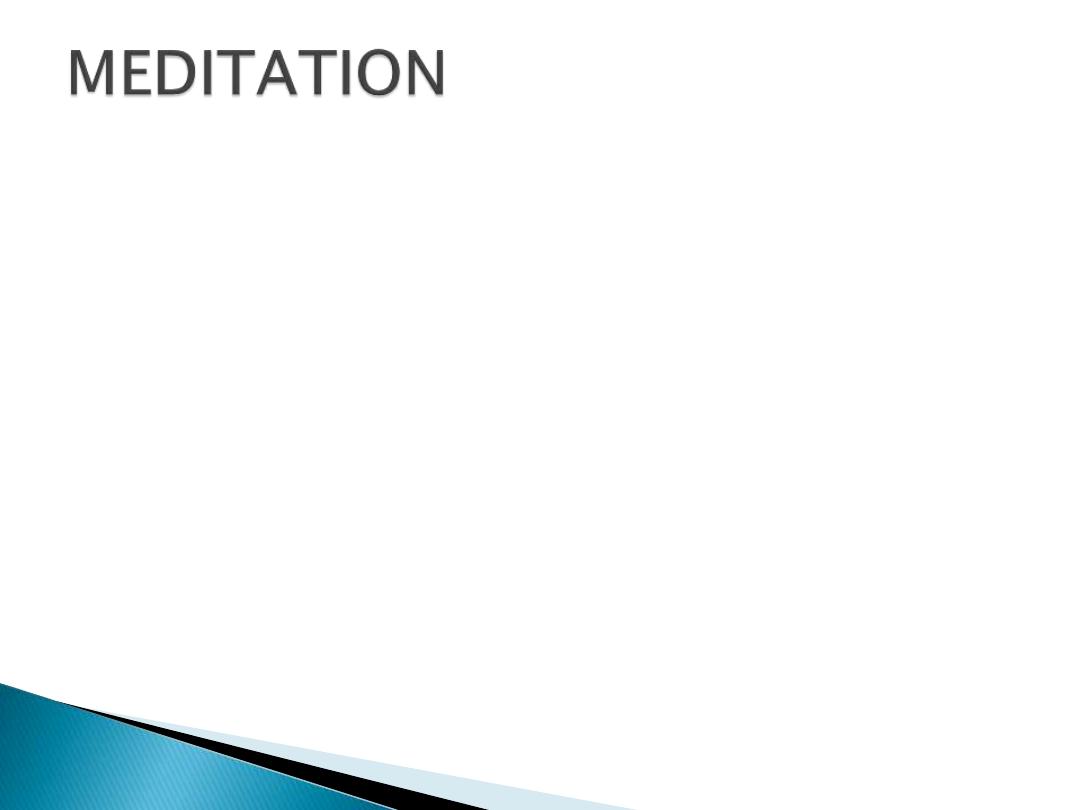
Achieving an altered state of consciousness
by performing certain rituals and exercises,
such as controlling and regulating breathing,
sharply restricting ones field of attention,
eliminating external stimuli, assuming yogic
body positions, and forming mental images
of an event or a symbol.
The result is a pleasant , mildly altered
subjective state in which the individual feels
mentally and physically relaxed.
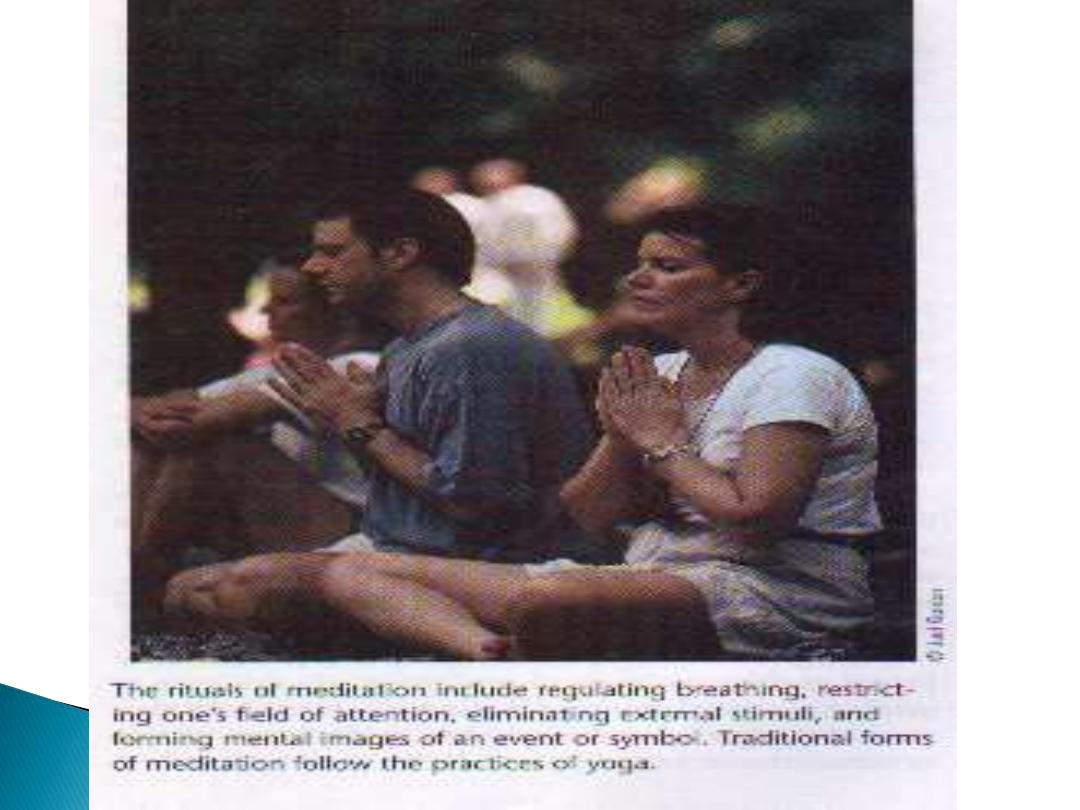
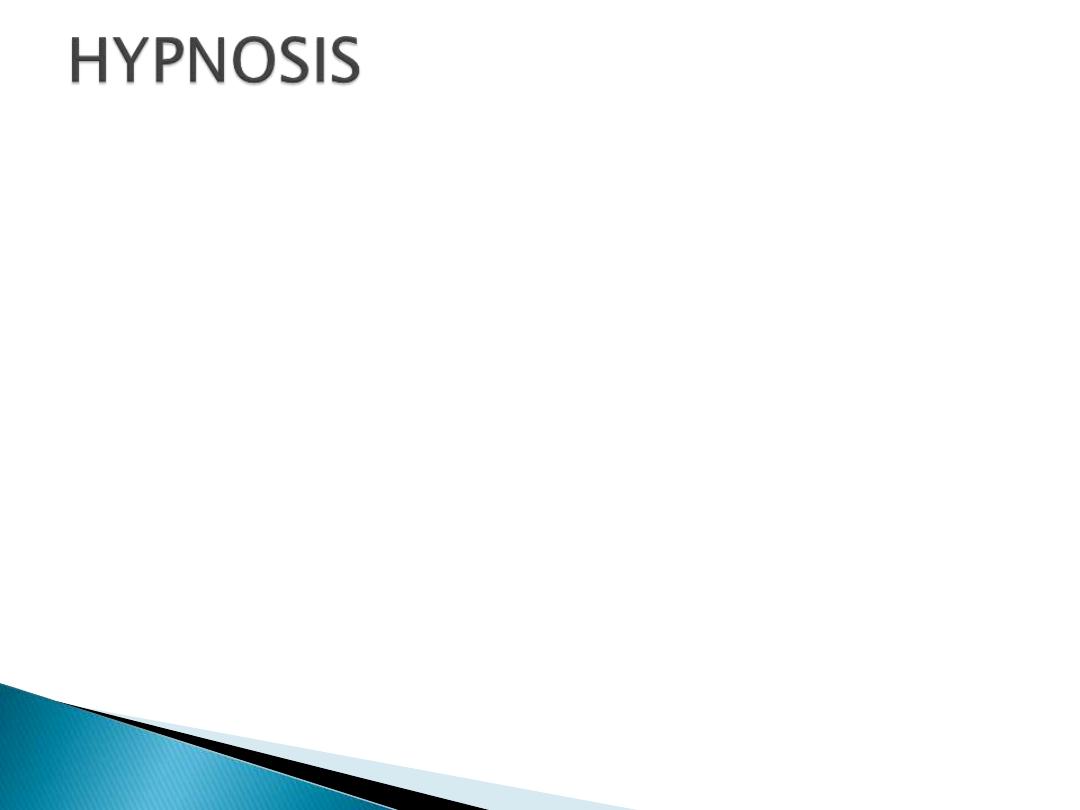
A complex mental phenomenon, defined as a state of
heightened focal concentration and receptivity to the
suggestions of another person who brings about the
condition by focusing the person’s attention on a
monotonous routine. (Originated by Anton Mesmer in
(1734 – 1815)).
A social interaction in which one person (designated the
subject) responds to suggestions offered by another
person (designated the hypnotist) for experiences
involving alterations in perception, memory and voluntary
action.
5-10% of people cannot be hypnotized even by a skilled
hypnotist.
Willing and cooperative individual is the only one that
can be hypnotized.

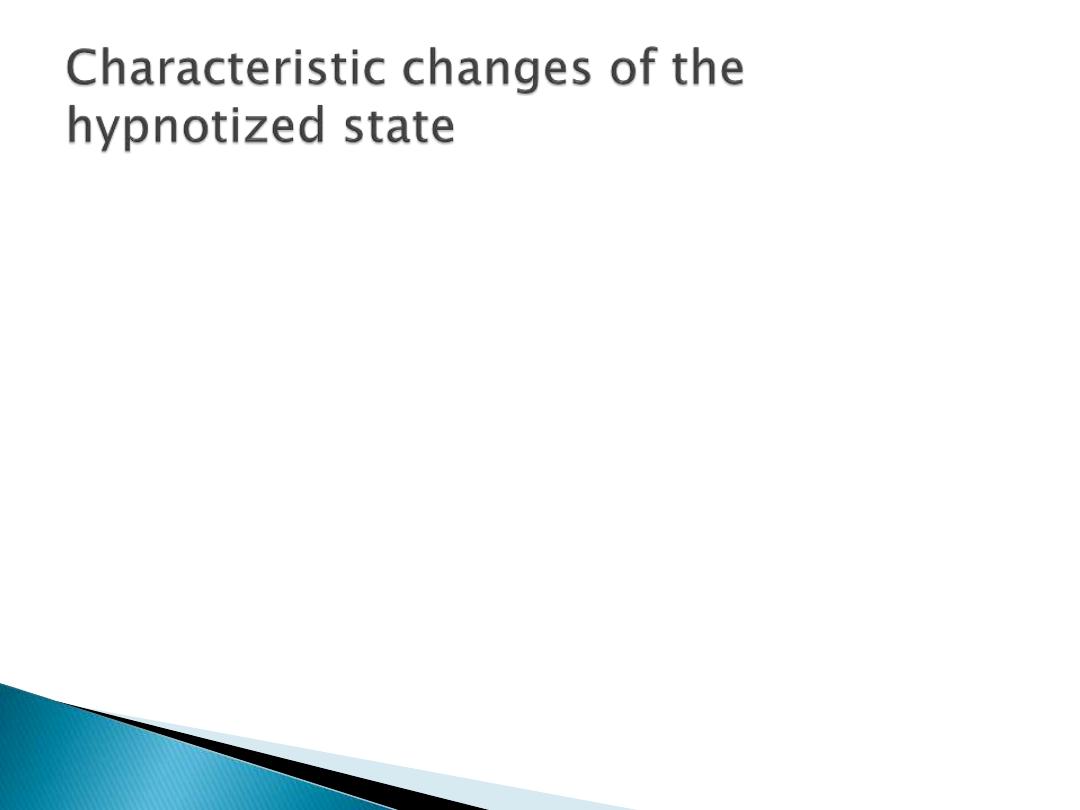
1.
Planfulness ceases.
2.
Attention becomes more selective than
usual.
3.
Enriched fantasy is readily evoked.
4.
Reality testing is reduced and reality
distortion accepted.
5.
Suggestibility is increased.
6.
Posthypnotic amnesia is often present.
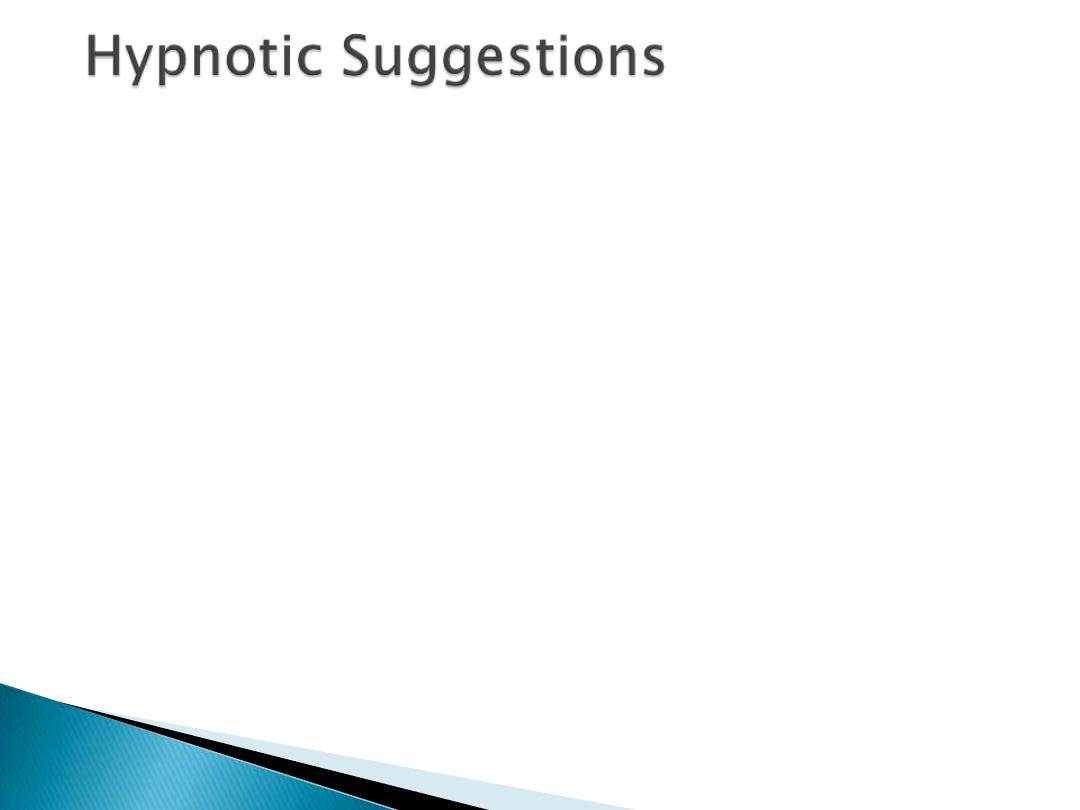
.
Hypnosis as therapy :
In Medicine:
1.
Reduce anxiety related to medical and dental procedures.
2.
Asthma.
3.
Gastrointestinal diseases.
4.
Nausea associated with cancer treatment.
5.
General pain management.
In Psychiatry
1.
Addiction.
2.
Emotional disorders.
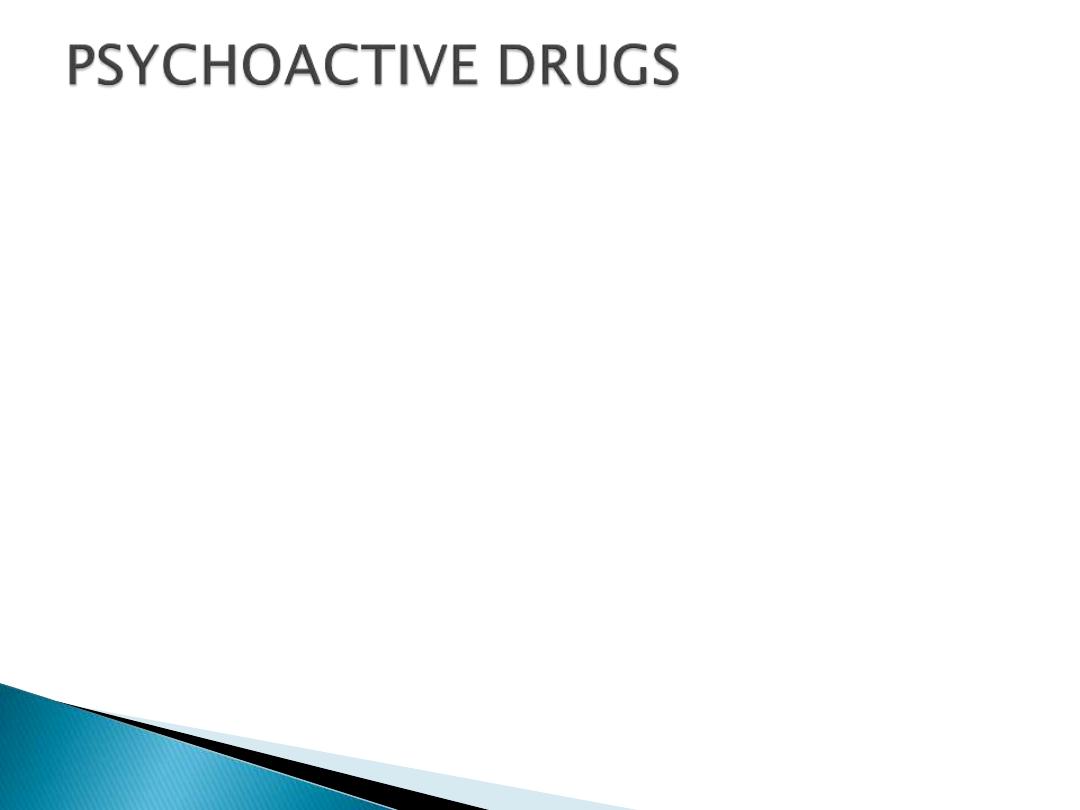
Drugs that affect behavior , consciousness,
and/or mood.
TYPES:
1. Depressants( sedatives): Alcohol, barbiturates,
benzodiazepines, inhalants.
2. Opiates: Opium & its derivatives: codeine,
heroine, morphine, methadone.
3. Stimulants: Amphetamines, cocaine, nicotine,
caffeine.
4. Hallucinogens: L.S.D., mescaline, psilocybin
,PCP.
5. Cannabis: marijuana, hashish.
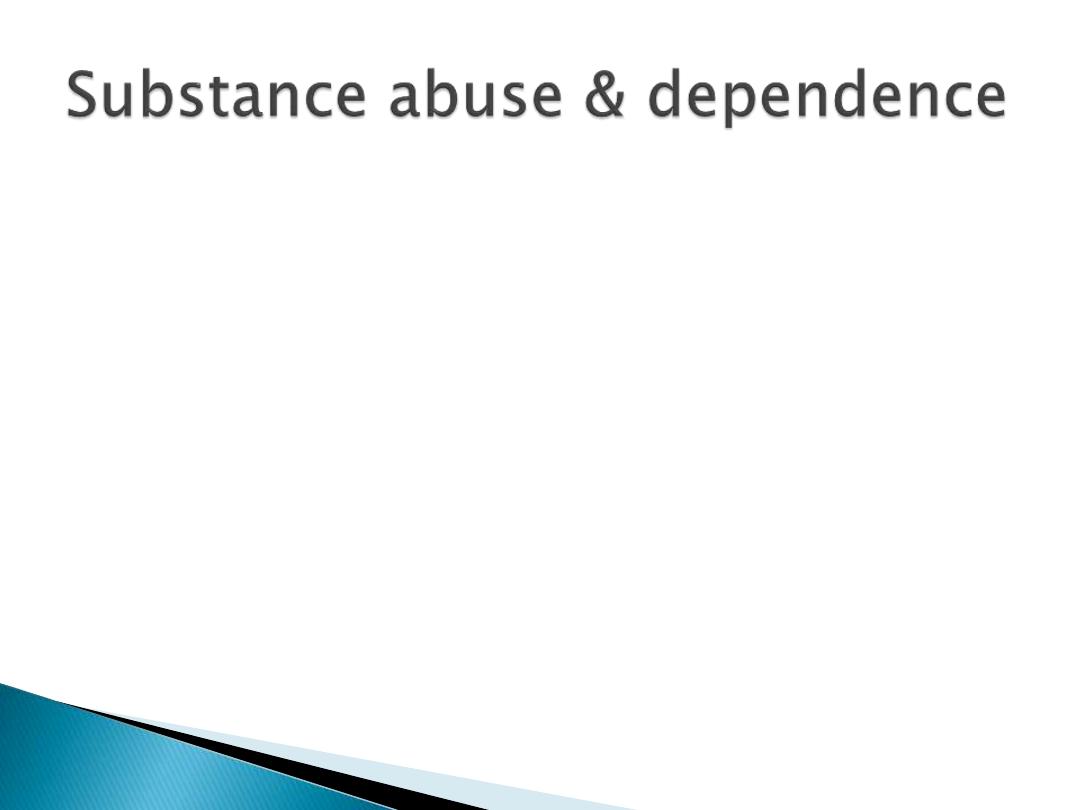
Whether a particular drug is legal or not does not reflect the
risks and dangers associated with the drug.
The prevalence of substance use and abuse increased
substantially in the last four decades.
The drugs listed in the previous slide are assumed to affect
behavior and consciousness because they act on the brain in
specific biochemical ways.
With repeated use ,an individual can become dependent on
any of them.
Drug dependence has three characteristics: tolerance,
withdrawal, and compulsive use.

Tolerance: with continued use ,the
individual must take more and more of
the drug to achieve the same effect.
Withdrawal: if use of the drug is
discontinued, the person experiences
unpleasant physical and psychological
reactions.
Compulsive use: the individual takes
more of the drug than intended, tries to
control his or her drug use but fails ,
and spends a great deal of time trying
to obtain the drug.

The degree to which tolerance develops and
the severity of withdrawal symptoms vary from
one drug to another.
Tolerance for opiates ,for example, develops
fairly quickly ,and heavy users can tolerate a
dosage that would be lethal to a nonuser.
In contrast, marijuana smokers seldom build
up much tolerance.
Withdrawal symptoms are common and easily
observed following heavy and sustained use of
alcohol, opiates and sedatives.
They are common but less apparent ,for
stimulants ,and non existent after repeated use
of hallucinogens.
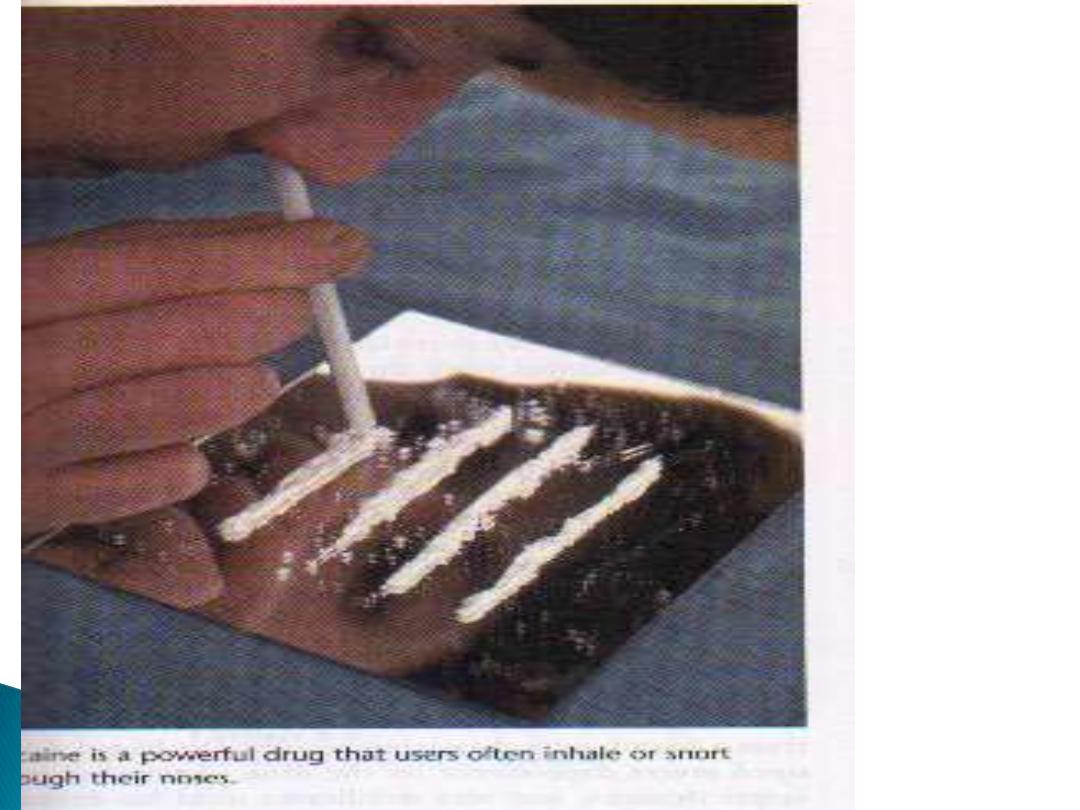
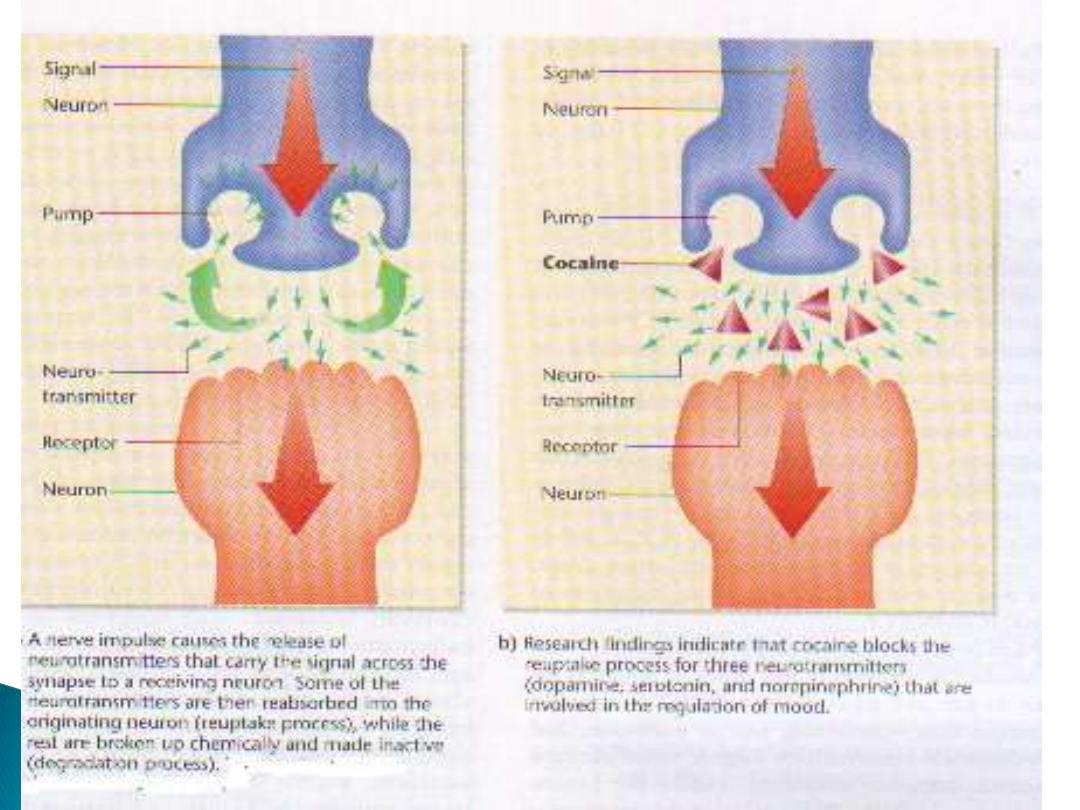

Although tolerance and withdrawal are the primary
characteristics of drug dependence; they are not
necessary for the diagnosis. A person who shows a
pattern of compulsive use without any signs of
tolerance or withdrawal, as some marijuana users do,
would still be considered drug dependent.
Drug dependence is usually distinguished from drug
abuse which is continued use of a drug ,despite
serious consequences, by a person who is not
dependent on it (that is ,show no symptoms of
tolerance, withdrawal or compulsive craving). For
example ,someone whose overindulgence of alcohol
results in repeated accidents , absence from work, or
marital problems (without signs of dependence) is
said to abuse alcohol.

THANK YOU
